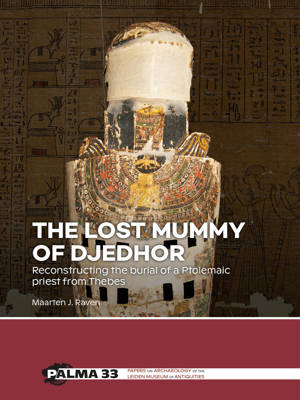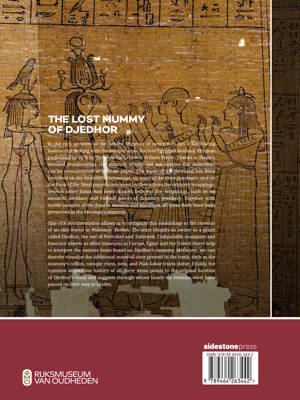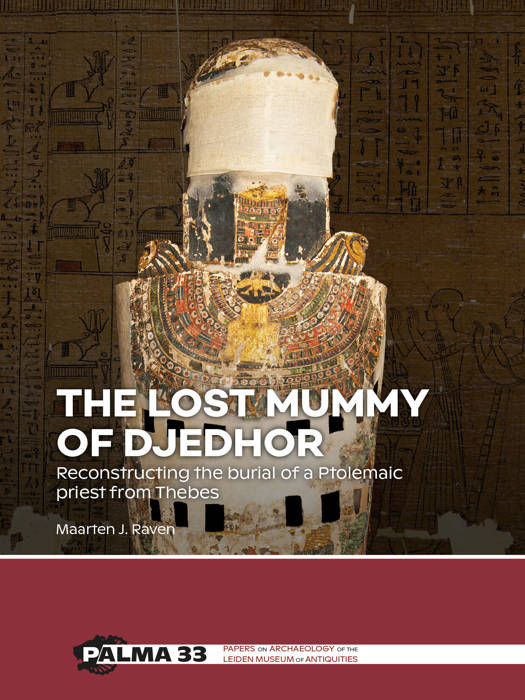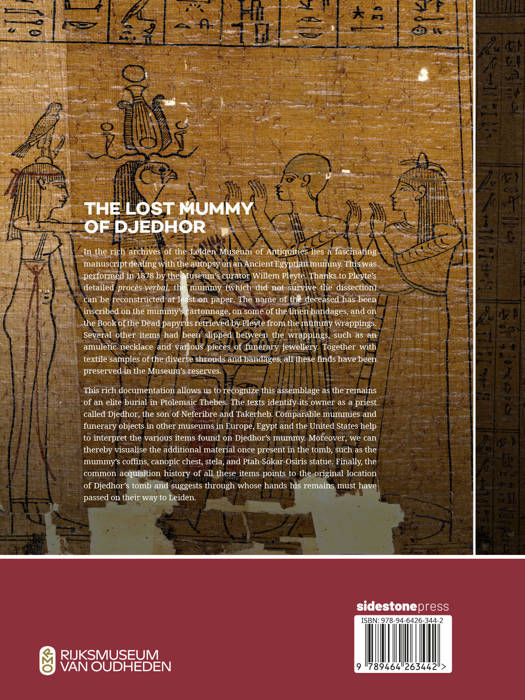
- Afhalen na 1 uur in een winkel met voorraad
- Gratis thuislevering in België vanaf € 30
- Ruim aanbod met 7 miljoen producten
- Afhalen na 1 uur in een winkel met voorraad
- Gratis thuislevering in België vanaf € 30
- Ruim aanbod met 7 miljoen producten
Zoeken


The Lost Mummy of Djedhor
Reconstructing the Burial of a Ptolemaic Priest from Thebes
Maarten J Raven
€ 75,00
+ 150 punten
Uitvoering
Omschrijving
In the rich archives of the Leiden Museum of Antiquities lies a fascinating manuscript dealing with the autopsy on an Ancient Egyptian mummy. This was performed in 1878 by the Museum's curator Willem Pleyte. Thanks to Pleyte's detailed procès-verbal, the mummy (which did not survive the dissection) can be reconstructed at least on paper. The name of the deceased has been inscribed on the mummy's cartonnage, on some of the linen bandages, and on the Book of the Dead papyrus retrieved by Pleyte from the mummy wrappings. Several other items had been slipped between the wrappings, such as an amuletic necklace and various pieces of funerary jewellery. Together with textile samples of the diverse shrouds and bandages, all these finds have been preserved in the Museum's reserves.
This rich documentation allows us to recognize this assemblage as the remains of an elite burial in Ptolemaic Thebes. The texts identify its owner as a priest called Djedhor, the son of Neferibre and Takerheb. Comparable mummies and funerary objects in other museums in Europe, Egypt and the United States help to interpret the various items found on Djedhor's mummy. Moreover, we can thereby visualise the additional material once present in the tomb, such as the mummy's coffins, canopic chest, stela, and Ptah-Sokar-Osiris statue. Finally, the common acquisition history of all these items points to the original location of Djedhor's tomb and suggests through whose hands his remains must have passed on their way to Leiden.
This rich documentation allows us to recognize this assemblage as the remains of an elite burial in Ptolemaic Thebes. The texts identify its owner as a priest called Djedhor, the son of Neferibre and Takerheb. Comparable mummies and funerary objects in other museums in Europe, Egypt and the United States help to interpret the various items found on Djedhor's mummy. Moreover, we can thereby visualise the additional material once present in the tomb, such as the mummy's coffins, canopic chest, stela, and Ptah-Sokar-Osiris statue. Finally, the common acquisition history of all these items points to the original location of Djedhor's tomb and suggests through whose hands his remains must have passed on their way to Leiden.
Specificaties
Betrokkenen
- Auteur(s):
- Uitgeverij:
Inhoud
- Aantal bladzijden:
- 110
- Taal:
- Engels
- Reeks:
Eigenschappen
- Productcode (EAN):
- 9789464263459
- Verschijningsdatum:
- 29/04/2025
- Uitvoering:
- Hardcover
- Formaat:
- Genaaid
- Afmetingen:
- 210 mm x 279 mm

Alleen bij Standaard Boekhandel
+ 150 punten op je klantenkaart van Standaard Boekhandel
Beoordelingen
We publiceren alleen reviews die voldoen aan de voorwaarden voor reviews. Bekijk onze voorwaarden voor reviews.












